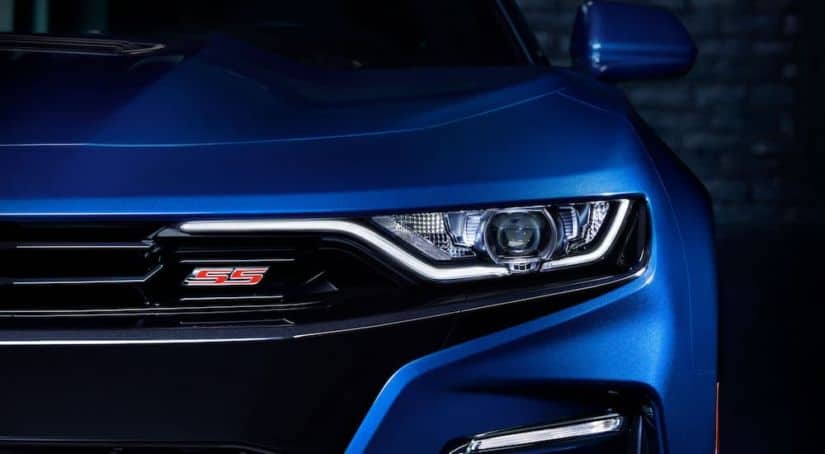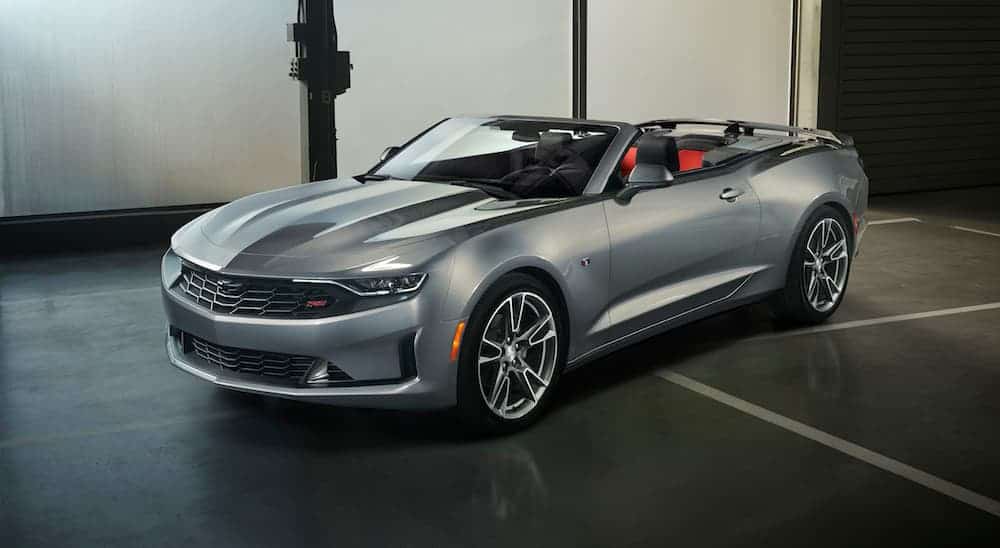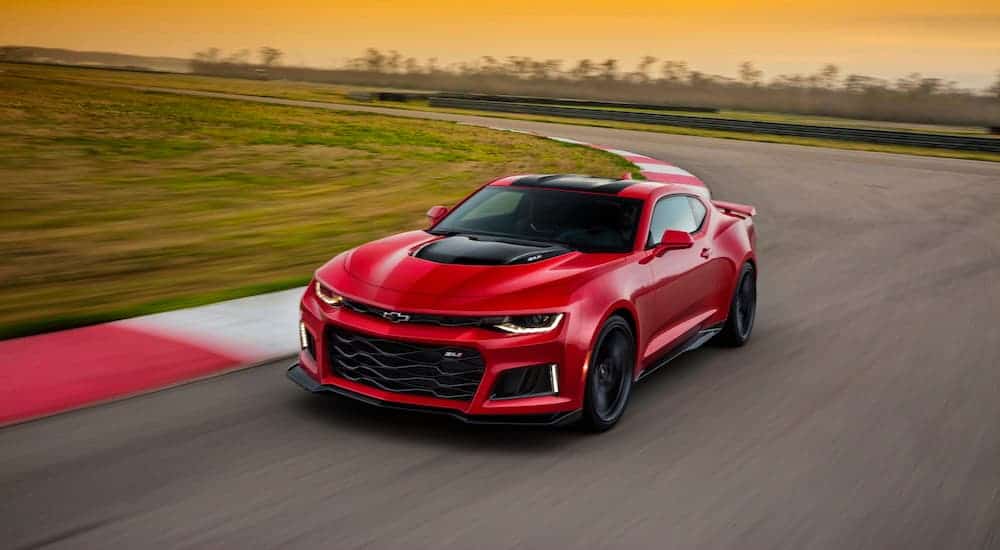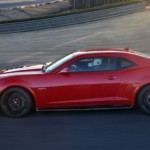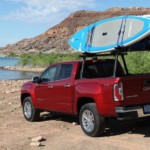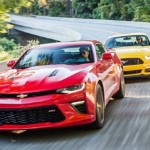Ah, the 2019 Chevy Camaro. As with most performance-inspired revivals of the last decade-and-a-half, the Camaro stands as a one-part legacy and one-part innovation. In its newest form, it was conceived to celebrate the storied past which came before it, while embracing forward-thinking innovation.
While reported history stories certainly include some borderline pretentious attempts at legend-building, ‘it’s widely accepted that the name ”Camaro” was selected based on a loosely perceived synonymity with ”companionship.” French linguists familiar with the term ”camarade” might take issue with that back story. But since 1966, the Camaro has proven itself to be exactly that: a faithful companion on streets and tracks alike. The Camaro earned the honorable distinction of being one of ‘America’s all-time greatest pony car rivals.
Across six generations, and just as many decades, the Camaro has endured with little interruption; ‘we’re looking at you 2003-2009. It has certainly come a long way from the 140 hp base model that debuted back in ”66. These days, even a base Camaro more-than-triples that output, and ‘that’s before we even set foot in ZL1 territory. And with all of that in mind, ‘let’s take a look at the 2019 Camaro lineup and explore ‘it’s inclusion as part of a more significant history — and that begins with addressing the elephant in the room.
Slowing Sales
Back in 2010, stateside sales of the newest model year Camaro were reported at 81,299 units. In that particular year, the Camaro managed to beat out both the Ford Mustang with 73,716 units and the Dodge Charger with 75,397 units sold. An impressive feat which certainly speaks to the ‘Camaro’s appeal and what consumers want in an American Muscle car.
Since that time, domestic sales of the Camaro would peak to 88,249 units sold in 2011 – declining with varying consistency until reaching 50,963 units sold in 2018. The Mustang, however, would gain popularity with each year, peaking in 2015 with 105,932 units sold. The Charger would follow a similar trajectory, rising in 2016 with 97,110 units sold. But as of 2016, the Camaro would find itself in third place behind the Charger and Mustang respectively. And if that ‘wasn’t already disheartening, 2019 sales are tracking for another drop. Even more interestingly is the growing market share gained by Dodge, with the Challenger rising steadily from 2008 to move 66,716 units in 2018.
But what does this say about the 2019 Camaro? Well, truth be told: not much of anything. For the most part, performance enthusiasts tend to be brand loyalists. And with the sixth-gen Camaro having only four years under its belt, one could argue that generational sales are simply in their natural ebb state.
Whether or not this is true will be significantly influenced by plans for the seventh-gen Camaro, and offering which was rumored to be canceled earlier this year. With cancellation these rumors squashed by General Motors, it appears that we ‘shouldn’t expect a next-gen offering until around 2024. Which leads us to the potential of mid-cycle refresh – one that could make or break Camaro sales in the immediate future. But ‘that’s enough speculation – ‘let’s take a closer look at the sixth-gen Camaro, as it exists, in its current form.
2019 Chevy Camaro
With pricing starting around $25,000 MSRP the Camaro is still surprising accessible, considering ‘you’re climbing behind the wheel of a legend. Available in six primary trim levels, and this isn’t including the ZL1, which ‘we’ll get to separately. Today’s Camaro features a reimagined and chiseled aesthetic, designed for innovative performance, but clearly respectful of what has come before. And that rings true whether you’re interested in the classic coupe, or the open-air experience offered by the fully-automatic soft-top convertible.
The base LS comes powered by a 2.0-liter four-cylinder engine paired with either a 6-speed manual or 8-speed paddle-shift automatic transmission. Delivering 275 hp and 295 lb-ft of torque, the LS provides a non-threatening foray into the world of the Camaro. That said, there is also the option of a 3.6-liter V6 powertrain that delivers a more impressive 335 hp and 284 lb-ft of torque, and those options extend across both the 1LT, 2LT, and 3LT trims. Pricing for those trims start just shy of $27K, $29K, and $32K respectively.
Stepping up to the 1SS and 2SS trims will redirect nearly all attention to performance and performance-minded design upgrades. Trading the 2.0-liter turbocharged engine for a 6.2-liter V8 is bound to make a difference, and that upgrade comes in spades at around 455 hp and 455 lb-ft of torque. These will put your starting price just shy of $38K and $43K respectively.
How do they measure up in terms of performance rankings? Well, the 275 hp Camaro LS will sprint to 60 mph in approximately 5.4 seconds, with a 14-second quarter mile. The SS trims brings these numbers up to 4.1 seconds and 12.4 seconds, which is something.
That said if you still have some flexibility in terms of pricing, and can handle a starting MSRP of around $63K, continue reading. If you’re looking for improved performance – well, it’s safe to say that Chevy has one more option for you thought shouldn’t disappoint.
2019 Camaro ZL1
Increasing the performance-minded engineering and design elements of an already performance-inspired offering is bound to put smiles on some faces, and the ZL1 is certainly no exception to that assertion.
It is powered by a 6.2-liter LT4 V8 direct-injected engine paired with the option of a 6-speed manual or 10-speed paddle-shift automatic, and the ZL1 brings 650 hp with a matching 650 lb-ft of torque. Powering through shifts seamlessly (and almost instantaneously) the ZL1 sprints to 60 mph in 3.4 seconds and runs the quarter-mile in 11.3 seconds. And we’d be remiss if we didn’t point out that’s .4 seconds faster to 60 mph and 1.2 seconds quicker on the quarter-mile than the Mustang Shelby GT350R. Equipped with Custom Launch Control, the ZL1’s raw performance is accentuated by features such as an aggressive front splitter, carbon-fiber hood extractor, expansive grille intake, and unique spoiler design, making it hard to beat. Upsized Brembo brakes, Magnetic Ride Control, the eLSD Performance Traction Management system only serve to position the ZL1 as an easy performance favorite further. Even if, admittedly, the not-quite-supercar price tag is still a little more than I’d want to spend any time soon. But with that amount of speed in under 3.5 seconds, the price tag is worth it.
Is the Camaro Right for You?
Ultimately, that’s the only question worth asking. Me? I’m a tried and true Mopar guy, so it’s all Chargers and Challengers on my end. That said, it’s hard not to appreciate what Chevy has put together in their revival of the Camaro in recent years.
For those who genuinely love driving, it’s almost impossible to overstate the importance of finding the right vehicle, that perfect companion for whichever roads you’re looking to travel. And for many, the Camaro is sure to deliver upon the inspiration for its name.
All things being equal, those sale numbers we had covered earlier probably aren’t a fair representation of the Camaro’s value, especially once we take brand loyalty into consideration. If anything we’ll be keeping our eyes peeled for that mid-cycle refresh, in case it happens.
But in the meantime …who’s thinking about a test drive?
